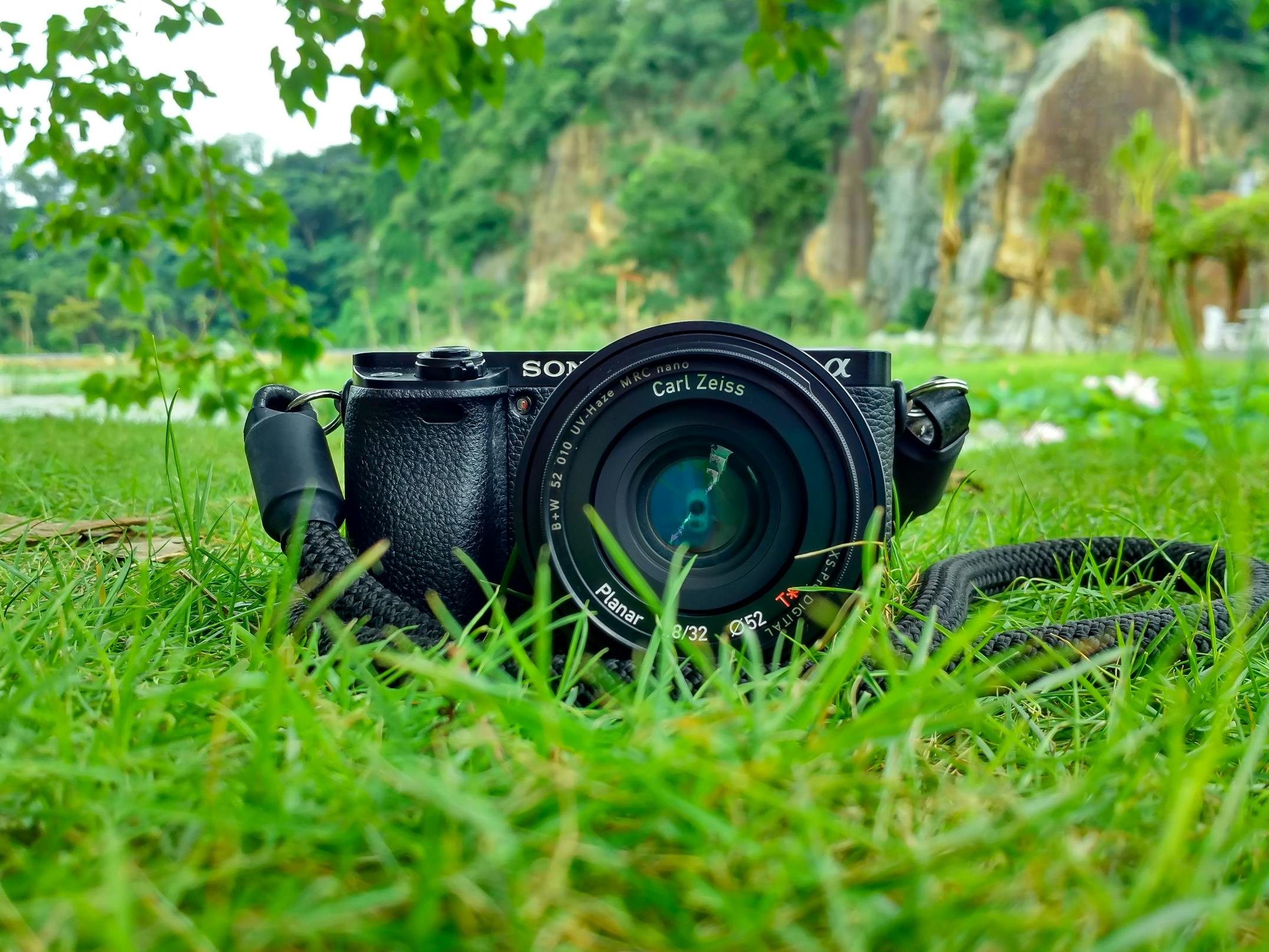Rich in historical roots with a variety of museums and historic sites, the South Georgia and Central Florida strip offers a glimpse into the past where rolling hills, lakes, forests and the nearby coastline allow one to get out into nature to enjoy some of the most beautiful places in the South. distinguished goods. Right in the middle of this is the state capital, where Tallahassee offers hundreds of miles of trails, gardens, city parks, and state parks for any outdoor enthusiast.
Trails in and around Tallahassee range from short, easy to long and more challenging, with each trail having its own unique characteristics. A short distance away on the east side of Tallahassee are three different parks, great for walking, biking, picnicking, and a playground. The Lafayette Heritage Trailhead begins in the center of Lafayette Park, where the trail to the east curves around the shores of Piney Z Lake to a levee, which crosses the lake to the JR Alford Greenway. The return trail runs through the back of the Piney Z community. The west loop connects to Tom Brown Park, where the trail has steep inclines and descents, making it more challenging. The two loops form a 5.9-mile hike through some of the most beautiful forests in Tallahassee.
More than 800 acres of hardwoods, pastures, a freshwater marsh, and a lake make up the JR Alford Greenway, where more than seventeen miles of multi-use trails will satisfy every type of nature lover. Unlike the Lafayette Trail, the trails here are relatively flat with the biggest incline being the wooden covered bridge over the railroad tracks, which connects the two parks. Tom Brown Park is Tallahassee’s favorite and most used park with large open fields, tennis courts and ball fields. In addition, the park has several unpaved nature trail loops, a 1.5-mile paved trail that runs from the northwest corner to the southeast corner, and a shared-use bike path. The trails combine for just over 5 miles of leisurely hiking through the woods.
Along the outskirts of the city there are several parks with picnic tables and other outdoor activities for personal enjoyment. On the south side of Tallahassee are the Munson and Twilight Trails, which meander through the Apalachicola National Forest. The Munson Trail loop covers 8.3 miles that wrap around a lake, while the Twilight Trail covers 10 miles. Combine the two trails using the connecting trails for a full day of outdoor adventure. Along the eastern border of Tallahassee is the Miccosukee Greenway. The four loops of the trails represent 7 miles of walking through flat, open terrain to rolling hills where the trail winds through oak forests with diverse scenery. This greenway meanders through protected living treasures with some houses dating back to the late 19th century.
For the person short on time, you’ll find several parks just on the edge of downtown Tallahassee where the trails are much shorter. The 3 miles of loop trails at San Luis Mission Park are a great place to escape into the lightly wooded woods where beautiful Lake Esther sits in the middle. A classic Tallahassee park is Lake Ella, where the 0.7 mile sidewalk, encircling the lake, offers leisure time benches where one can enjoy the beautiful scenery or admire the wildlife of ducks and geese. Fern Trail in Governor’s Park is a short 1.8-mile loop, winding through a hardwood and pine forest displaying some fall colors. The half-mile one-way Kohl’s Trail will combine the Fern Trail with the 1-mile Bog Path loop, which meanders along a narrow path that crosses several streams through thick humid forest, leaving one with the impression to be in a jungle. Nestled in the middle of seven surrounding neighborhoods and covering 72 acres on the northeast side of Tallahassee is AJ Henry Park, one of Tallahassee’s newest parks. The park has a wooden walkway overlooking a lake, picnic areas, a playground, open play areas, and hiking trails. The two loop trails are a combined short 2 miles; however, with the hillside and ravine crossing, the hike is a bit more challenging.
Tallahassee not only has trails for enjoyment, there are also museums and gardens around the city and is home to a mid-1900s English-style Tudor house, where a short drive leads to a 3.5-acre site in an extravagantly lush forest where the house has wide views of the garden. The beauty of the great oak trees and labyrinths will surely give the impression that one is far from the city strolling through a fairytale oasis. Just a few blocks from the city center are six acres of lush Florida garden filled with camellias, azaleas, palms, and other native flora that give the park an atmosphere not found anywhere else in the city. The history of Dorothy B. Oven Park dates back to the mid-19th century, when Congress granted the property to the General Marquis de Lafayette in 1834. The main house on the property is a classic manor house with rare magnolia paneling, wooden floors and antique furniture, ideal for weddings and receptions. Near downtown Tallahassee is the Goodwood Museum and Gardens, the original home of a 1,600-acre cotton plantation dating back to the early 1800s. Today, the property is on the National Register of Historic Places and covers some 20 acres of century-old oak trees and gardens where the main house features the family’s original furnishings, glassware, and art. Surrounding the main house are 20 other structures dating from 1835 to 1925, the original swimming pool, and an outdoor skating rink.
Just a short drive from Tallahassee, families can experience state parks, state forests, and a National Refuge, providing a variety of outdoor activities for one’s enjoyment. Just west of Tallahassee is Torreya State Park, named for the rare Torreya tree, which only grows on the bluffs overlooking the Apalachicola River. Some of Florida’s best fall colors are on display throughout the hardwood forest and the high cliffs, mesas and deep ravines make this park one of the most picturesque in Florida. The park has two loop trails where the River Bluff Loop is about seven miles through ravines and streams where Logan’s Bluff rises about 300 feet above the Apalachicola River. A 5-mile connector trail leads to a 5-mile loop through a forest of hardwoods, longleaf pine, dogwood, and Queen Magnolia. The park is also home to a beautiful southern mansion built in 1849 known as the Gregory House.
One of Florida’s most hidden treasures is just south of Tallahassee in Wakulla Springs State Park, designated a National Natural Landmark and listed on the National Register of Historic Places. The park is home to one of the largest and deepest freshwater springs in the world, where the 70 degree waters are sure to cool you down even on the hottest days of summer. The history of this park stretches back thousands of years, from the first Native Americans to the first filmmakers who discovered that the primal quality of the park’s swamps and wildlife was a perfect fit for movies like Tarzan’s Treasure (1941) and Creatures from the Black Lagoon (1954). ) ). Nestled between the spring and the trailhead is the historic lodge, a fixture of Old Florida where the elegance of the lodge is maintained just as it was in the early 1800s. Covering a little over six miles, the park’s main trails lead into swamp forest through southern hardwood cypress and maple habitats, where several state and national champion trees, the largest of their kind, stand. mix with other forest giants.
Just over an hour’s drive north near Blakely Georgia is Kolomoki Mounds State Park, home to the oldest and largest Woodland Indian site in the southeastern United States dating from the era of 350 to 750 AD. AD Standing 57 feet tall, Temple Mound is the oldest mound in Georgia, surrounded by smaller mounds used for burials and ceremonies. In addition to the campground, playground, picnic areas, and beautiful lakes, the park features three hiking trails that cover 5.8 miles. The Trillium Loop Trail passes through four natural communities as the trail winds through a hardwood forest along the shore of Lake Kolomiki crossing several spring-fed streams. As the trail ascends and descends, the different communities become apparent as you pass through native bamboo, southern magnolia, loblolly, and spruce pine. Beginning at Yohola Lake Dam, the Spruce Pine Loop Trail traverses rugged terrain through a forest of dogwood, water oak, spruce pine, and magnolia, providing a natural habitat for turkey, deer, and bobcats. Along the White Oak Loop Trail are ravines and gullies fed by underground springs which provided a large amount of water for survival and where timber from this forest supplied the lumber needed to build thatched cottages for living quarters. Parts of this trail go around the mounds and through part of the town area.
West of Tallahassee are nearly 20,000 acres of forest where a variety of tree species make up the Talquin Lake State Forest. The largest community in the forest is the upland pines, which lies amid rolling forest hills where a great diversity of plants and animals thrive. Bear Creek and the Fort Braden Tracts offer some excellent examples of hillside and ravine forest communities. The 492-acre Bear Creek Tract offers three trails totaling 5.5 miles of the region’s most rugged trails through wetlands, sand hills and dramatic ravines where the section along Bear Creek has steep inclines and narrow foundations. While the Fort Braden Tract highlights a variety of ecosystems as you traverse three 9-mile loop trails with stunning views of Talquin Lake.
Devastated in 2018 by Hurricane Michael, The Florida Caverns State Park still offers visitors a rare glimpse into the past. In the 1930s, the Civilian Conservation Corps hand-carved the corridors between the cave’s rooms, allowing visitors to see thousands of years in the making. Narrow and sometimes low passageways lead through twelve fragile, slippery and damp caves, where stalactites, stalagmites, lava flows and curtains continue to grow into a visual array of mystifying formations.
Located a short drive south of Tallahassee is the St. Marks National Wildlife Refuge, offering a variety of outdoor activities for any outdoor enthusiast. The refuge consists of flat pine forests, palm hammocks, swamps, and cypress-fringed ponds along the coast, and extends inland. Scattered along the coast are small beaches and river-fed tidal creeks. Additionally, the refuge is home to the second oldest lighthouse in the state, built in 1842 and has become one of the most photographed locations on the Gulf Coast. Trails in the refuge wind their way through hammocks of oak, cut pine, and marshland, providing excellent opportunities to photograph migratory birds.




